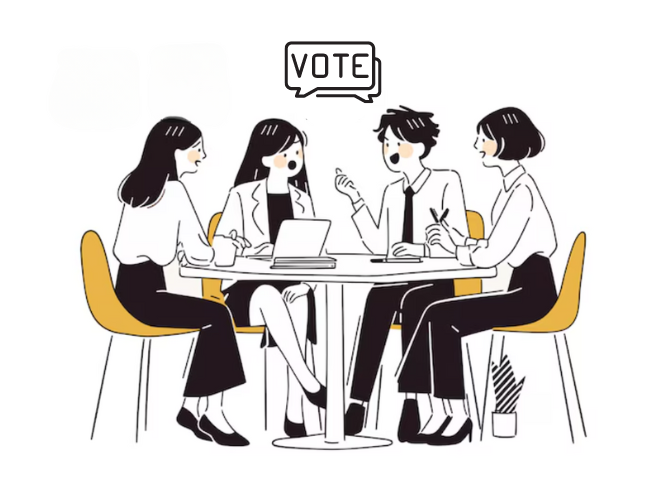Meetings are an indispensable part of work. They foster team-building, problem-solving, and innovation in ways that emails and instant messages often cannot.
Despite their utility, a series of eye-opening statistics compiled by Otter, a meeting software company, reveal a widespread misuse of meetings. Here are a few notable data points.
The solution to this problem is two-fold. First, leaders and team members must schedule and attend fewer meetings, focusing on keeping the ones that truly drive value. Achieving this goal requires an understanding of the psychological tendencies that make scheduling and attending meetings so tempting. Second, meeting organizers must ensure that appropriately scheduled meetings are designed to minimize fatigue and wasted time.
Psychological Tendencies That Make Meetings So Enticing
Though leaders recognize that meetings take up far too much time, they struggle to change their meeting habits. As Ashley Williams, assistant professor of business administration at Harvard University, notes, several psychological tendencies make it difficult to avoid scheduling and attending unnecessary meetings. These include:
- Fear of missing out (FOMO): FOMO can occur in almost every aspect of life. Any time one participates in an event solely because they fear that by not joining, they will miss out on critical information, goods, or experiences, FOMO has taken effect. While the phenomenon can be helpful, it often leads to counter-productive behavior. In the workplace, it can cause employees to attend meetings that are unlikely to benefit them or their organizations because they fear they would otherwise be missing an opportunity to learn critical updates or impress their boss with insightful comments.
- Meetings as motivators: Deadlines help many employees get things done. In some cases, employers create deadlines in the form of meetings to foster productivity. While this can work as an effective motivator, the meetings that occur after the work has been completed may not serve a purpose.
- The mere urgency effect: Studies have found that people are more likely to complete seemingly urgent (i.e., time-sensitive) but unimportant tasks over ones with a greater payoff. Meetings tend to provoke this response. As they can only be completed at a pre-specified time slot, they are often viewed as highly urgent, making employees feel compelled to attend instead of addressing other less urgent but more important tasks.
- Pluralistic ignorance: Pluralistic ignorance occurs when individuals who share the same opinions each assume they are alone in their beliefs and feelings. In the context of workplace meetings, this psychological phenomenon can manifest itself in the form of attendees and meeting organizers believing they are alone in feeling the meetings are unhelpful or counterproductive.
For all of these tendencies, the first step towards combatting bad meetings is awareness. Simply knowing these tendencies exist and lead employees to schedule meetings unnecessarily can make them easier to resist. Leaders should educate employees on these habits of the mind so they can free themselves of the overwhelming need to schedule meetings and feel compelled to decline meeting invites.
Managers should also model proper meeting behavior. For example, leaders can visibly decline meetings and block off times on their schedules for meeting-free work. They can also openly discuss concerns about an overabundance of meetings and encourage employees to do the same.
No-meeting days are a great way to provide a much-needed break. Test out a no-meeting policy for Mondays or Fridays, as those are the least preferred meeting days.
How to Optimize Indispensable Meetings
Even when the meetings are limited to an acceptable number, they can still be draining and unhelpful if not run properly. Fortunately, there are several steps leaders can take to ensure their appropriately scheduled meetings are purposeful, inclusive, productive, and energizing.
- Define the meeting’s purpose: Meetings are likely to fall flat when neither the leader nor participants clearly understand its purpose. Therefore, organizers should define the meeting’s purpose before the session begins and use the stated goal to assess whether a meeting is necessary. Leaders should also tell employees why each meeting is happening so they can determine how to contribute and whether their attendance is essential.
- Set an agenda: In addition to the meeting’s purpose, leaders should create an outline for each of the subtopics that will be discussed. This will allow attendees to prepare to respond and participate. It will also provide a clear structure that discourages tangents and other unrelated discussions that are not immediately relevant to the purpose of the meeting.
- Keep it short: Meetings are often much longer than they need to be. Try limiting most meetings to 30 minutes. For more time-consuming meetings, try to shave 10 to 20 minutes off at the end and let attendees know that you plan to end early unless a fruitful discussion is still underway.
- Include Breaks: For meetings that require more time, be sure to include breaks. Just a couple of minutes can help attendees recharge their cognitive reservoirs and avoid excessive fatigue that impacts their post-meeting tasks.
- Adapt to hybrid formats: As COVID-19 subsides, many organizations are returning to the office, often with hybrid arrangements. While this setup has many benefits, it can pose many challenges, especially for hybrid meetings. As a result, employers must take special precautions to ensure their hybrid meetings are productive and inclusive, such as having all in-person attendees on camera, encouraging all parties to raise their hands before speaking, and soliciting unvoiced contributions from remote attendees.












